Resurrecting Legends: Is the Star Wars Reboot Gendered?
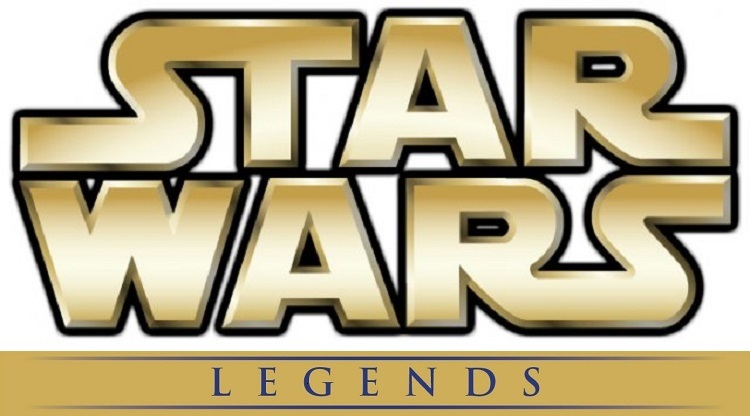 In telling the story of the group of Rebels who secured the plans to the Empire’s dreaded Death Star, Rogue One: A Star Wars Story presented a remarkable challenge: maintaining a convincing sense of visual continuity across the thirty-nine-and-a-half years between the first Star Wars and the new film. Much of this was accomplished by revisiting the familiar iconography of the Original Trilogy, from X-wings and Star Destroyers to white-armored stormtroopers and the secret Yavin base. In addition, the extensive use of new characters, not only among the Rebels but also their Imperial adversaries, gave Lucasfilm considerable creative freedom.
In telling the story of the group of Rebels who secured the plans to the Empire’s dreaded Death Star, Rogue One: A Star Wars Story presented a remarkable challenge: maintaining a convincing sense of visual continuity across the thirty-nine-and-a-half years between the first Star Wars and the new film. Much of this was accomplished by revisiting the familiar iconography of the Original Trilogy, from X-wings and Star Destroyers to white-armored stormtroopers and the secret Yavin base. In addition, the extensive use of new characters, not only among the Rebels but also their Imperial adversaries, gave Lucasfilm considerable creative freedom.
Yet the nature of the story, and its proximity in the timeline to A New Hope, all but compelled the inclusion of certain iconic figures in Rogue One. Darth Vader required James Earl Jones, already recently returned to the vocal role for Star Wars Rebels, and suitably menacing physical actors beneath the masked costume. Jimmy Smits reprised Bail Organa from the Prequel Trilogy. 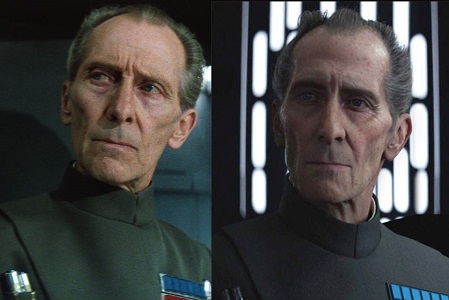 His Rebel colleagues Mon Mothma and General Dodonna found portrayals in Genevieve O’Reilly, returned from performing in the deleted scenes in Revenge of the Sith, and Ian McElhinney, in neither case with any pretense of precisely matching the previous actors in Episodes VI and IV, respectively. For Leia’s momentary cameo, Ingvild Deila provided a body-double that, with a touch of digital manipulation, recreated the young princess; her single word of dialogue was snatched from the earlier films, as with Alec Guiness’ voice as Obi-Wan Kenobi in Rey’s vision in The Force Awakens. For Grand Moff Tarkin, though, Guy Henry delivered an extensive physical and vocal performance impressively evocative of the late Peter Cushing – but that was not deemed sufficient to carry the Imperial villain’s role in the story, and ILM motion-capture wizardry transplanted the dead actor’s visage over Henry’s throughout the film. With fans seemingly well at ease with O’Reilly and McElhinney, computer-generated Tarkin and Leia in Rogue One has sparked controversy.
His Rebel colleagues Mon Mothma and General Dodonna found portrayals in Genevieve O’Reilly, returned from performing in the deleted scenes in Revenge of the Sith, and Ian McElhinney, in neither case with any pretense of precisely matching the previous actors in Episodes VI and IV, respectively. For Leia’s momentary cameo, Ingvild Deila provided a body-double that, with a touch of digital manipulation, recreated the young princess; her single word of dialogue was snatched from the earlier films, as with Alec Guiness’ voice as Obi-Wan Kenobi in Rey’s vision in The Force Awakens. For Grand Moff Tarkin, though, Guy Henry delivered an extensive physical and vocal performance impressively evocative of the late Peter Cushing – but that was not deemed sufficient to carry the Imperial villain’s role in the story, and ILM motion-capture wizardry transplanted the dead actor’s visage over Henry’s throughout the film. With fans seemingly well at ease with O’Reilly and McElhinney, computer-generated Tarkin and Leia in Rogue One has sparked controversy.
As Star Wars continues to push forward, another context in the ongoing interaction between the tales of the past and the stories of the future also is testing the franchise’s decision-makers. After producing nearly three decades of development in the Star Wars galaxy, Lucasfilm rebooted its storytelling universe for its new era of stories, starting fresh to build again upon the foundation laid by the six films and one television series created by George Lucas. The first film, The Force Awakens, introduced characters and world-building that reset the franchise to a point far different than its previous incarnation.
Yet just as with Rogue One, the pull of the past is powerful. It did not take long for many elements of the earlier era to return in the new one. Unfortunately, however, the gendered patterns of the past are recurring, too. Once again the franchise must confront the danger of alienating many of its most passionate and longtime fans in service of the preferences and agendas of a privileged few.
The Expanded Universe, the Single Continuity, and the Legends Reboot
A full evaluation of the trajectory of Star Wars storytelling and lore outside the frames of George Lucas’ six feature films easily could consume an entire lengthy post, more likely a series of posts. A summary of the background is useful, though, to set the context from the perspectives of both storytellers and fandom.
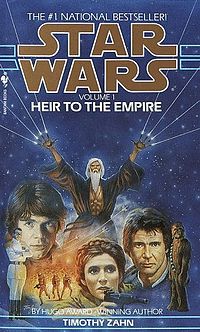 Until 2014, the term “Expanded Universe” referred to all Star Wars content not created by George Lucas. In the period surrounding the Original Trilogy films, 1976 to 1987, this included a handful of novels, an ongoing comic series from Marvel, and nuggets of lore revealed in a variety of sources such as behind-the-scenes features and action figure cardbacks. The development of lore increased substantially with the launch of the roleplaying game product line from West End Games, which ran from 1987 to 1998 and included game manuals as well as short fiction. To flesh out the Star Wars galaxy for game players, numerous details were added to the universe: names for species, background characters, vehicles, and technology seen in the films; world-building about the Empire, Rebellion, and the civil war between them; and the creation of many new planets, species, characters, weapons, vehicles, and technology to elaborate beyond the limited scope of the three movies. The expansion of storytelling resumed in earnest in the early 1990s, beginning with the acclaimed Thrawn Trilogy of novels by Timothy Zahn and the Dark Empire comic mini-series from Dark Horse. By 1998, the Expanded Universe contained dozens of novels, comics, and videogames that added further lore and original characters, as well as the initial stages of post-Return of the Jedi adventures for Han, Leia, Luke, Lando, Chewbacca, and other favorites from the films.
Until 2014, the term “Expanded Universe” referred to all Star Wars content not created by George Lucas. In the period surrounding the Original Trilogy films, 1976 to 1987, this included a handful of novels, an ongoing comic series from Marvel, and nuggets of lore revealed in a variety of sources such as behind-the-scenes features and action figure cardbacks. The development of lore increased substantially with the launch of the roleplaying game product line from West End Games, which ran from 1987 to 1998 and included game manuals as well as short fiction. To flesh out the Star Wars galaxy for game players, numerous details were added to the universe: names for species, background characters, vehicles, and technology seen in the films; world-building about the Empire, Rebellion, and the civil war between them; and the creation of many new planets, species, characters, weapons, vehicles, and technology to elaborate beyond the limited scope of the three movies. The expansion of storytelling resumed in earnest in the early 1990s, beginning with the acclaimed Thrawn Trilogy of novels by Timothy Zahn and the Dark Empire comic mini-series from Dark Horse. By 1998, the Expanded Universe contained dozens of novels, comics, and videogames that added further lore and original characters, as well as the initial stages of post-Return of the Jedi adventures for Han, Leia, Luke, Lando, Chewbacca, and other favorites from the films.
 The year 1999 brought the definitive end of the “Dark Times” for fandom: not only the start of the Prequel Trilogy films, but also a dramatic growth in Expanded Universe content. In addition to books in the newly opened prequel era, the New Jedi Order novel series unfurled an ambitious 19-book saga taking place two decades after the Battle of Endor, followed by 21 further novels with a younger generation of heroes, including Solo-Skywalker children, alongside the classic characters. Dark Horse also undertook extensive comics storytelling in the prequel era as well as other points across thousands of years of the Star Wars timeline. Videogames and roleplaying manuals frequently expanded the lore, as well. From 2002 to 2005, Lucasfilm rolled out an unprecedented multimedia campaign, telling stories of a three-year Clone Wars between Episodes II and III in “real time” through books, comics, videogames, short fiction, and even in-universe Holonet News bulletins. By 2014, the Expanded Universe encompassed hundreds of adult novels, young adult books, comics, short fiction, sourcebooks, and other materials. The fan-run Wookieepedia, seeking to reference every official resource and intricate detail of minutiae therein, included thousands of entries running millions of total words in length. The internet fandom also had generated tens of millions of words of fanfiction inspired by the Expanded Universe as well as the films.
The year 1999 brought the definitive end of the “Dark Times” for fandom: not only the start of the Prequel Trilogy films, but also a dramatic growth in Expanded Universe content. In addition to books in the newly opened prequel era, the New Jedi Order novel series unfurled an ambitious 19-book saga taking place two decades after the Battle of Endor, followed by 21 further novels with a younger generation of heroes, including Solo-Skywalker children, alongside the classic characters. Dark Horse also undertook extensive comics storytelling in the prequel era as well as other points across thousands of years of the Star Wars timeline. Videogames and roleplaying manuals frequently expanded the lore, as well. From 2002 to 2005, Lucasfilm rolled out an unprecedented multimedia campaign, telling stories of a three-year Clone Wars between Episodes II and III in “real time” through books, comics, videogames, short fiction, and even in-universe Holonet News bulletins. By 2014, the Expanded Universe encompassed hundreds of adult novels, young adult books, comics, short fiction, sourcebooks, and other materials. The fan-run Wookieepedia, seeking to reference every official resource and intricate detail of minutiae therein, included thousands of entries running millions of total words in length. The internet fandom also had generated tens of millions of words of fanfiction inspired by the Expanded Universe as well as the films.
Especially during the latter period, Lucasfilm publicly maintained a fairly consistent position that the Expanded Universe comprised a “single continuity” of lore and storytelling. That is, subsequent stories or sourcebooks were obligated to respect the information and tales in prior materials; other than extremely rare exceptions specifically identified and marketed as such, alternate timeline or alternate universe content was not authorized. 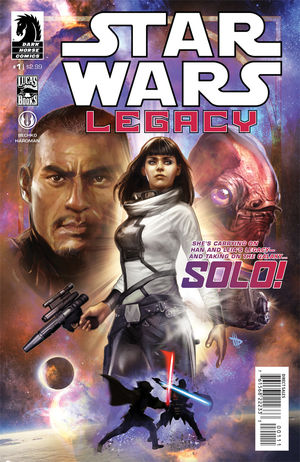 Dead characters had to stay dead, and children could not be erased; lost battles could not be ignored nor victories overwritten. Once events “happened,” they existed as part of the Expanded Universe’s history of the Star Wars galaxy. With as much content as Star Wars generated in these decades, of course, contradictions and inconsistencies were inevitable. Some mistakes could be hand-waved as simple errors and ignored as functionally equivalent to a typographical goof – for example, a single incorrect reference to a character’s eye color on one page of one novel – but many others could not be so easily dismissed. This led to the rise of the practice of generating explanations of “retroactive continuity” which sought to conform the otherwise inconsistent sources into a coherent whole. Such a “retcon” might, for instance, devise the solution that Character X in fact had been present at Battle A, even though her presence was never mentioned in Book A, to reconcile her reference in later-published Book B to having participated in that engagement. (Ironically, perhaps the most famous Star Wars retcon came from George Lucas himself: the reveal in Return of the Jedi that Leia was Luke’s twin sister, the “another” hope referenced by Yoda in The Empire Strikes Back, to resolve the love triangle dynamic initially created in A New Hope.) Retcons became, both within fandom and in official statements and publications from Lucasfilm, the mortar that allowed the brick wall of single continuity to sustain itself.
Dead characters had to stay dead, and children could not be erased; lost battles could not be ignored nor victories overwritten. Once events “happened,” they existed as part of the Expanded Universe’s history of the Star Wars galaxy. With as much content as Star Wars generated in these decades, of course, contradictions and inconsistencies were inevitable. Some mistakes could be hand-waved as simple errors and ignored as functionally equivalent to a typographical goof – for example, a single incorrect reference to a character’s eye color on one page of one novel – but many others could not be so easily dismissed. This led to the rise of the practice of generating explanations of “retroactive continuity” which sought to conform the otherwise inconsistent sources into a coherent whole. Such a “retcon” might, for instance, devise the solution that Character X in fact had been present at Battle A, even though her presence was never mentioned in Book A, to reconcile her reference in later-published Book B to having participated in that engagement. (Ironically, perhaps the most famous Star Wars retcon came from George Lucas himself: the reveal in Return of the Jedi that Leia was Luke’s twin sister, the “another” hope referenced by Yoda in The Empire Strikes Back, to resolve the love triangle dynamic initially created in A New Hope.) Retcons became, both within fandom and in official statements and publications from Lucasfilm, the mortar that allowed the brick wall of single continuity to sustain itself.
Simultaneously, the Expanded Universe remained secondary in importance to, and bound by any developments in, the Star Wars storytelling “canon” created by George Lucas – although the messaging from Lucasfilm to fandom on this point was less consistent and less clear. After 1983, the Original Trilogy films formed the touchstone. Fortunately, though, Lucasfilm had guarded the backstory fairly carefully, and relatively speaking few retcons of any real significance were needed to conform the pre-1999 Expanded Universe to the Prequel Trilogy films. As of 2005 the Expanded Universe conception of a single Star Wars continuity had managed to survive Lucas’ second trio of films mostly unscathed.
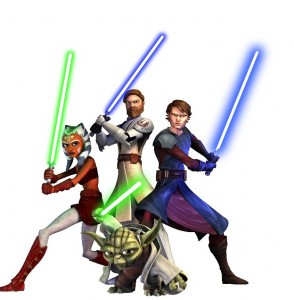 The first stark challenge to the persistence of a single continuity emerged in 2008 with the premiere of The Clone Wars animated series, created and overseen by Lucas. The series was no mere animated reimagining of the earlier Expanded Universe multimedia campaign. For one, Lucas specifically told his creative team to start fresh – they were not beholden to the characters, plotlines, and timeline of the earlier war stories. For another, Lucas’ vision was fundamentally at odds with the very premises of the Expanded Universe tales: Anakin was Knighted early in the war, rather than near its end; Padmé played an integral role in the politics of the Republic, rather than being sidelined to keep clear of content in the ongoing movies; and most substantially, Anakin had a Padawan learner throughout the war, an idea never even considered a possibility, much less referenced or portrayed, in the prior stories. Any attempt to reconcile these two utterly different versions of the conflict – the Expanded Universe continuity and The Clone Wars canon – was futile from its inception. They simply had too many differences in foundational ideas of story design.
The first stark challenge to the persistence of a single continuity emerged in 2008 with the premiere of The Clone Wars animated series, created and overseen by Lucas. The series was no mere animated reimagining of the earlier Expanded Universe multimedia campaign. For one, Lucas specifically told his creative team to start fresh – they were not beholden to the characters, plotlines, and timeline of the earlier war stories. For another, Lucas’ vision was fundamentally at odds with the very premises of the Expanded Universe tales: Anakin was Knighted early in the war, rather than near its end; Padmé played an integral role in the politics of the Republic, rather than being sidelined to keep clear of content in the ongoing movies; and most substantially, Anakin had a Padawan learner throughout the war, an idea never even considered a possibility, much less referenced or portrayed, in the prior stories. Any attempt to reconcile these two utterly different versions of the conflict – the Expanded Universe continuity and The Clone Wars canon – was futile from its inception. They simply had too many differences in foundational ideas of story design.
In retrospect, Lucasfilm likely would have been better off declaring a reboot at that point, officially acknowledging the two versions of the Clone Wars as distinct and irreconcilable. Instead, the messaging of the single continuity was retained for the duration of the five-season television run of The Clone Wars, 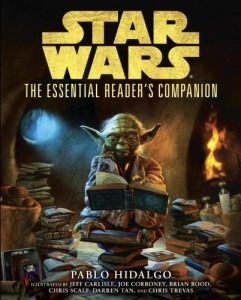 even as the number of contradictions and inconsistencies between the animated series and Expanded Universe continued to grow. Those impacts included not simply the complete overwriting of the tales within the brief span of years between Attack of the Clones and Revenge of the Sith, but also ripples and shockwaves all along the Star Wars timeline from the ramifications of Lucas’ changes. Mere weeks before the announcement of Disney’s acquisition of Lucasfilm in late October 2012, the publication of The Essential Readers Companion reaffirmed the principle that the Expanded Universe’s version of the war was obligated to be retconned into conformity with Lucas’ animated series. Once the production of new Star Wars movies was revealed, however, the franchise’s ability to sustain the pre-existing Expanded Universe and the forthcoming cinematic canon as a single continuity on an ongoing basis conclusively ended.
even as the number of contradictions and inconsistencies between the animated series and Expanded Universe continued to grow. Those impacts included not simply the complete overwriting of the tales within the brief span of years between Attack of the Clones and Revenge of the Sith, but also ripples and shockwaves all along the Star Wars timeline from the ramifications of Lucas’ changes. Mere weeks before the announcement of Disney’s acquisition of Lucasfilm in late October 2012, the publication of The Essential Readers Companion reaffirmed the principle that the Expanded Universe’s version of the war was obligated to be retconned into conformity with Lucas’ animated series. Once the production of new Star Wars movies was revealed, however, the franchise’s ability to sustain the pre-existing Expanded Universe and the forthcoming cinematic canon as a single continuity on an ongoing basis conclusively ended.
The official announcement of the Star Wars reboot arrived in late April 2014. All existing Expanded Universe material was rebranded as Legends, and would remain its own alternate timeline of stories within the Star Wars franchise. Going forward, new Star Wars material would form a separate storytelling universe, taking only George Lucas’ six films and The Clone Wars as the canonical building blocks. Although the new films would serve as the flagship tales of this emerging Star Wars, the stories and lore developed in television, books, comics, and elsewhere also would be overseen by Lucasfilm’s Story Group and receive equal status. No longer would some stories or mediums be secondary; every story would be canon. Most importantly, the storytellers working on the new Star Wars would, like the creators of The Clone Wars before them, not be beholden to the characters, timeline, or tales of the Legends materials.
The Legends universe was dead. Until it wasn’t.
Surviving the Reboot, So Far: What Is and Isn’t Getting Resurrected
When it opened in 2010, FANgirl Blog focused in significant part on analysis and criticism of the then-current state of the Star Wars Expanded Universe. Tricia Barr and I, as well as the rest of our initial contributors, had been longtime Expanded Universe fans with deep knowledge of that continuity. Some of our most prominent early posts addressed serious concerns about how the characters and stories were being created and overseen – not to tear down the official materials and their creators, but to provide constructive criticism in urging the Powers That Be to do better.
One of those early posts, in fact, specifically considered and rejected the possibility of a reboot as a solution to the problems that had developed in the Expanded Universe. Tricia advocated that the ongoing progression of the single continuity needed to be course-corrected and improved. She argued that starting fresh in a new second Expanded Universe continuity – without first confronting and resolving the underlying flaws in the creative process that had plagued the existing continuity – would not solve anything. Instead it would effect only a temporary, illusory fix that ultimately would do nothing to prevent exactly the same flaws from arising again in the second, new timeline.
Yet like the decision-makers within Lucasfilm at that time, this position against rebooting was premised on the single continuity and the Expanded Universe as the future of Star Wars storytelling. The announcement of the Disney acquisition and the production of new movies – including the Episode VII-IX trilogy that first-generation Star Wars fans had long given up ever seeing come to pass on the silver screen – changed everything. This wasn’t what Tricia had argued against: a fresh start by the same leadership in the hope of papering over existing problems. Rather, this was a chance to bring new leadership, new creators, and new values and sensibilities into the development and oversight of Star Wars storytelling. In that context, binding the new lifeblood of Star Wars to the flaws, weaknesses, and bad decisions of the Expanded Universe would have been the worst possible decision that Kathleen Kennedy and the newly formed Story Group could have made. Fortunately, they rebooted Star Wars.
 Very quickly, however, it became clear that the reboot was not sealing everything from Legends in an archival box and shuttling it off to be lost to the depths of the government warehouse at the end of Raiders of the Lost Ark, never to be seen again. The canonical materials from George Lucas, after all, actually are quite sparse in generating details of lore. Nothing in the movies identifies species as Ithorian, Aqualish, or Kaleesh, or calls Han’s blaster a DL-44, or provides starship names like Home One and Invisible Hand. What an incredible waste of intellectual energy it would have been to revisit every single item of lore ever created outside of Lucas’ canon. Lucasfilm rightly had no interest in essentially creating an entirely new dictionary of Star Wars – or for that matter, a new galactic map, even if the Legends tales had formed the foundation of many of the cartographic decisions made by Jason Fry and Dan Wallace over hundreds of hours of producing the immense and comprehensive Essential Atlas. By April 2015, a year after the reboot’s announcement, the new canon encyclopedia Ultimate Star Wars had ratified that nearly all of the dictionary style lore from Legends – names, labels, places, technology, jargon – was being resurrected in the new era of Star Wars.
Very quickly, however, it became clear that the reboot was not sealing everything from Legends in an archival box and shuttling it off to be lost to the depths of the government warehouse at the end of Raiders of the Lost Ark, never to be seen again. The canonical materials from George Lucas, after all, actually are quite sparse in generating details of lore. Nothing in the movies identifies species as Ithorian, Aqualish, or Kaleesh, or calls Han’s blaster a DL-44, or provides starship names like Home One and Invisible Hand. What an incredible waste of intellectual energy it would have been to revisit every single item of lore ever created outside of Lucas’ canon. Lucasfilm rightly had no interest in essentially creating an entirely new dictionary of Star Wars – or for that matter, a new galactic map, even if the Legends tales had formed the foundation of many of the cartographic decisions made by Jason Fry and Dan Wallace over hundreds of hours of producing the immense and comprehensive Essential Atlas. By April 2015, a year after the reboot’s announcement, the new canon encyclopedia Ultimate Star Wars had ratified that nearly all of the dictionary style lore from Legends – names, labels, places, technology, jargon – was being resurrected in the new era of Star Wars.
With the Legends factual lore mostly surviving, what remained to decide was the fate of the story side of the single continuity: the characters, plotlines, world-building, and events of in-universe Star Wars history. On this question, Lucasfilm had a number of alternatives for the Sequel Trilogy. A direct adaptation of the existing material, comparable to Harry Potter or The Hunger Games, was not a viable option given the breadth and depth of the thirty books comprising the New Jedi Order and Legacy of the Force tales. More feasibly, the characters and key events in those stories, which occurred in the right timeline interval and contained some powerful storylines and themes, might have formed the basis for a reimagining similar to the Marvel Cinematic Universe’s films loosely based on iconic stories like The Winter Soldier, Age of Ultron, and Civil War. Another possibility would have involved retaining the characters from Legends, but writing entirely new stories for them. Lastly, the new movies could not only tell new stories, but also create new characters to star in them, as well.
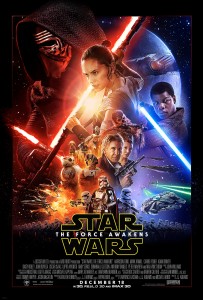 The Force Awakens definitively revealed the latter as the choice made by the Story Group – the cleanest break from the past, with new characters and world-building to accompany the new storylines. Certainly this decision opened up the most room for creativity and flexibility by the creators generating them.
The Force Awakens definitively revealed the latter as the choice made by the Story Group – the cleanest break from the past, with new characters and world-building to accompany the new storylines. Certainly this decision opened up the most room for creativity and flexibility by the creators generating them.
At the same time, the Star Wars galaxy unveiled in The Force Awakens did not necessarily have a significant impact on the overall catalogue of existing Legends characters. Of course, several of the most prominent characters undeniably cannot exist in the new canon: Jaina, Jacen, and Anakin Solo, and their cousin Ben Skywalker. Other than these erased offspring of the Original Trilogy Big Three, however, nothing in the character backstories or world-building of the new canon inherently prevents many other Legends characters from resurrection. Some would have to undergo more metamorphosis than others: the pilots of the Rogue and Wraith Squadron books, for example, could appear virtually unchanged, while Jagged Fel might have to be repurposed into a defecting First Order ace with no Chiss past or Solo daughter romance; Thrawn could appear as a cunning fleet admiral adversary, while Mara Jade might retain her role as Emperor’s Hand but not a Jedi apprenticeship with or marriage to Luke Skywalker. Thus, just as with factual lore, whether to resurrect any particular character, and under what circumstances and modifications, remains a possibility open to the Story Group and individual storytellers.
In the initial outlay of new canon stories so far, from April 2014 through December 2016 across all storytelling mediums, the primary beneficiaries of resurrection from Legends have been nuggets of factual lore. Star Wars Rebels revived starships first seen in videogames, like the Hammerhead corvette from the Knights of the Old Republic and the YT-2400 freighter best known for Dash Rendar’s Outrider from Shadows of the Empire, and numerous aspects of world-building originating in the West End Games roleplaying game, including COMPNOR, the Imperial Security Bureau, the Lasat species, and the planet Shantipole. Likewise, The Ultimate Visual Guide for Rogue One, authored by the Story Group’s Pablo Hidalgo, contains dozens of references to West End Games lore, including planets, incidents, and characters. Even the LEGO Star Wars series The Freemaker Adventures drew from Legends material, such as the personal starship Punishing One for bounty hunter Dengar.
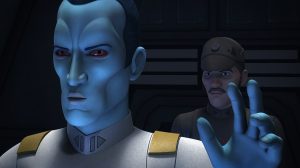 By contrast, comparatively few Legends characters have been resurrected. The Story Group era principally has involved stories featuring new characters in the lead roles, supplemented where appropriate by prior canon characters from the movies and The Clone Wars. The films and Star Wars Rebels have followed this model, as have the books and Marvel comics. Among them, only a handful of Legends characters have reappeared – and most of those occurred in a single book, James Luceno’s Tarkin, which self-indulgently resurrected a variety of obscure characters about whom the author had written extensively in the Legends stories, such as Armand Isard, Raith Seiner, Sate Pestage, and Ars Drangor. To date the only Legends character resurrection of any significance is Grand Admiral Thrawn on Star Wars Rebels, which occurred due to the enthusiastic encouragement of Story Group head Kiri Hart and series co-creator Dave Filoni.
By contrast, comparatively few Legends characters have been resurrected. The Story Group era principally has involved stories featuring new characters in the lead roles, supplemented where appropriate by prior canon characters from the movies and The Clone Wars. The films and Star Wars Rebels have followed this model, as have the books and Marvel comics. Among them, only a handful of Legends characters have reappeared – and most of those occurred in a single book, James Luceno’s Tarkin, which self-indulgently resurrected a variety of obscure characters about whom the author had written extensively in the Legends stories, such as Armand Isard, Raith Seiner, Sate Pestage, and Ars Drangor. To date the only Legends character resurrection of any significance is Grand Admiral Thrawn on Star Wars Rebels, which occurred due to the enthusiastic encouragement of Story Group head Kiri Hart and series co-creator Dave Filoni.
The practice of Legends resurrections so far illustrates the key point: the inclusion of Legends references is not part of a broader project to adapt or retell the Legends stories, but rather to provide, within the new canon and its new adventures for new characters, Easter Eggs and similar implicit shout-outs to the fans who recognize and appreciate the references. These winks and nods, after all, have no significance to the broader audience. Just as millions of fans of the Marvel Cinematic Universe can enjoy those movies without catching the subtle connections to the original comics, so too most Star Wars fans will experience the same enjoyment of the new stories whether they believe that a particular name, starship, or character is a wholly new creation or realize that it is in fact a nugget resurrected from Legends. These Easter Eggs are important not for their own sake, but for their acknowledgement of the importance to the franchise of the longtime Star Wars fans who loved Legends.
If only a relatively small numbers of fans are cognizant of the Legends resurrections in any event, the question remains: what explains such a great disparity between the revival of Legends factual lore and the return of Legends characters? The answer comes from the nature of the Star Wars storytelling process at Lucasfilm today. No different than the new characters and new tales, the instances of Legends resurrections are the product of creative choices.
The Stories Ahead: It Matters Who’s In the Room Where It Happens
Legends resurrections, whether lore or characters, do not spontaneously generate themselves within a story. They occur when a person – perhaps a direct storyteller, such as novel author, comic scribe or illustrator, or screenwriter; perhaps a franchise overseer, such as editor, beta-reader, or Story Group member – makes the suggestion that reviving something from Legends would make a positive contribution to the tale rather than creating something new to fill that particular role in the story. If the suggestion is approved, subject to the variety of considerations which might be relevant in the Story Group’s oversight process, then another element of the Legends universe makes the lightspeed jump into the new canon.
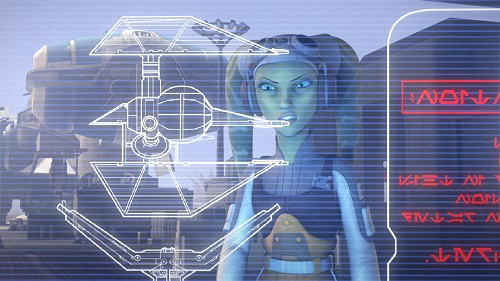 The short version of the explanation for the lore/character disparity, then, is simply this: Legends resurrections happen when someone asks for it, and the people in position to make requests have successfully advocated for the approval of more revivals for lore than characters. To date, more creators and executives have achieved the inclusion of West End Games world-building and factual lore, compared to other Legends elements, and so more of that has been resurrected.
The short version of the explanation for the lore/character disparity, then, is simply this: Legends resurrections happen when someone asks for it, and the people in position to make requests have successfully advocated for the approval of more revivals for lore than characters. To date, more creators and executives have achieved the inclusion of West End Games world-building and factual lore, compared to other Legends elements, and so more of that has been resurrected.
The origin of this disparity, though, is more complicated – because it is merely one subset of a larger dynamic within the contemporary creative development process at Lucasfilm. When certain perspectives are privileged over others, when the range of viewpoints on and backgrounds with the franchise are limited in the decision-making venues, then the nature of those creative inputs will determine the nature of the Star Wars storytelling outputs.
 The information officially revealed by Lucasfilm about the creation of the cinematic tales in the new canon makes eminently clear that the process of envisioning, designing, writing, and filming these stories has been deeply gendered. Even in the earliest “blue sky” phases, The Art of The Force Awakens and The Art of Rogue One show that the concept artist teams, undoubtedly massively talented, were almost entirely men. On Star Wars Rebels one woman, Amy Beth Christenson, is a longtime and trusted member of the concept art team, but again the other key participants are men. Even though a project undergoes considerably more development after initial concepts are rendered, those earliest ideas and designs play an important role in shaping the vision, look, and feel of the tale. The story of The Force Awakens was formed initially by Michael Arndt, followed by a screenplay famously crafted by J.J. Abrams and Lawrence Kasdan during long walks through Santa Monica and Paris, among other cities, before the film was directed by Abrams. For Rogue One, the story came from John Knoll and Gary Whitta and culminated in a screenplay credited to Chris Weitz and Tony Gilroy; director Gareth Edwards participated in concept art and storyboarding from the very early stages of development, and a consistent talking point in the movie’s press tour has been that the film reflects the creative vision proposed and fulfilled by Edwards. In the first two and a half seasons of Star Wars Rebels, comprising 52 episodes, only two episodes have been written by a woman, Nicole Dubuc, and not a single one has been directed by a woman.
The information officially revealed by Lucasfilm about the creation of the cinematic tales in the new canon makes eminently clear that the process of envisioning, designing, writing, and filming these stories has been deeply gendered. Even in the earliest “blue sky” phases, The Art of The Force Awakens and The Art of Rogue One show that the concept artist teams, undoubtedly massively talented, were almost entirely men. On Star Wars Rebels one woman, Amy Beth Christenson, is a longtime and trusted member of the concept art team, but again the other key participants are men. Even though a project undergoes considerably more development after initial concepts are rendered, those earliest ideas and designs play an important role in shaping the vision, look, and feel of the tale. The story of The Force Awakens was formed initially by Michael Arndt, followed by a screenplay famously crafted by J.J. Abrams and Lawrence Kasdan during long walks through Santa Monica and Paris, among other cities, before the film was directed by Abrams. For Rogue One, the story came from John Knoll and Gary Whitta and culminated in a screenplay credited to Chris Weitz and Tony Gilroy; director Gareth Edwards participated in concept art and storyboarding from the very early stages of development, and a consistent talking point in the movie’s press tour has been that the film reflects the creative vision proposed and fulfilled by Edwards. In the first two and a half seasons of Star Wars Rebels, comprising 52 episodes, only two episodes have been written by a woman, Nicole Dubuc, and not a single one has been directed by a woman.
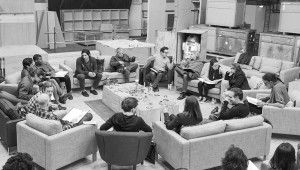 This massive differential in participation in the creative process is not limited to insignificant impacts. Both The Force Awakens and Rogue One have principal-character motivations centered around father figures and daddy issues for Kylo Ren and Jyn Erso, respectively, with essentially no value given to the relationship with their mothers. The portrayal of the relationship between Han and Leia by Abrams and Kasdan remains controversial, and influential women on the books side, including editor Jennifer Heddle and author Claudia Gray, quickly moved to moderate, if not retcon, some of the damage done in the eyes of many longtime female fans of the franchise. Even the creation and casting of minor characters was affected. Abrams, for example, wrote a plot point and expositional dialogue as an X-wing pilot for his childhood friend Greg Grunberg, while giving the sole female pilot a couple bits of inconsequential battle commentary. Another longtime friend, Simon Pegg, played Rey’s gatekeeper Unkar Plutt, and the iconic figure of Captain Phasma was only gender-swapped to cast Gwendoline Christie late in the story’s development. Edwards’ casting of principals and extras on Rogue One was equally skewed, with dozens of white men among the Imperial and Rebel forces but only two women, Jyn Erso and Mon Mothma,
This massive differential in participation in the creative process is not limited to insignificant impacts. Both The Force Awakens and Rogue One have principal-character motivations centered around father figures and daddy issues for Kylo Ren and Jyn Erso, respectively, with essentially no value given to the relationship with their mothers. The portrayal of the relationship between Han and Leia by Abrams and Kasdan remains controversial, and influential women on the books side, including editor Jennifer Heddle and author Claudia Gray, quickly moved to moderate, if not retcon, some of the damage done in the eyes of many longtime female fans of the franchise. Even the creation and casting of minor characters was affected. Abrams, for example, wrote a plot point and expositional dialogue as an X-wing pilot for his childhood friend Greg Grunberg, while giving the sole female pilot a couple bits of inconsequential battle commentary. Another longtime friend, Simon Pegg, played Rey’s gatekeeper Unkar Plutt, and the iconic figure of Captain Phasma was only gender-swapped to cast Gwendoline Christie late in the story’s development. Edwards’ casting of principals and extras on Rogue One was equally skewed, with dozens of white men among the Imperial and Rebel forces but only two women, Jyn Erso and Mon Mothma, 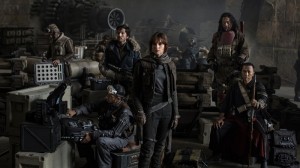 having any appreciable significance to the story. Even Rebels, which generally has better representation among its core cast of new characters, brought back Ahsoka Tano from The Clone Wars in a supporting role and Princess Leia for one episode, but has provided recurring parts for many more male canon characters including Rex, Hondo, Maul, Tarkin, Darth Vader – and most recently, the Legends resurrection Grand Admiral Thrawn.
having any appreciable significance to the story. Even Rebels, which generally has better representation among its core cast of new characters, brought back Ahsoka Tano from The Clone Wars in a supporting role and Princess Leia for one episode, but has provided recurring parts for many more male canon characters including Rex, Hondo, Maul, Tarkin, Darth Vader – and most recently, the Legends resurrection Grand Admiral Thrawn.
The same dynamic of disparity in creative inputs producing distorted storytelling outputs corresponds to the difference between the large quantity of factual lore brought into the new canon from Legends compared to the trivial amount of characters. Men predominate in the creative roles, and the Legends elements resurrected have been those they value more.
Over at least the past two decades, both within fandom and among the professional participants at Lucasfilm and its licensees, the aggregate patterns reflect that male fans generally are more invested in lore and facts, while female fans generally are more invested in characters. Of course individual fans have a multitude of priorities and interests in the franchise, but the overall trendlines are well known. 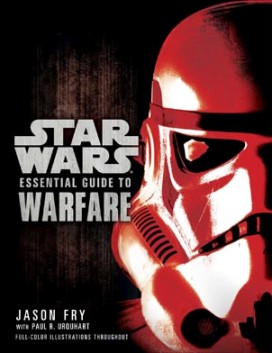 Back in the message boards era, male fans dominated literature forums and debates about continuity errors and retcons, where officially published Star Wars contributors frequently observed or even participated in the conversations; female fans congregated in fanfiction forums and discussions of consistency of characterization, where they often were invisible to or overlooked by the Powers That Be based on purported concerns of potential copyright liability. Nearly all of the fandom contributors to projects like What’s The Story? lore-building, retcon-heavy articles in Star Wars Insider or Star Wars Gamer, and the crowd-sourced mapmaking for The Essential Atlas were male. Many members of the self-proclaimed experts in the Star Wars Fanboy Association successfully transitioned from fandom engagement into official contributions to the Expanded Universe. The fan-run Wookieepedia, frequently mentioned by name by Lucasfilm affiliates for its comprehensiveness and usefulness, has been and remains notorious for the exclusionary, bullying, misogynist internal culture created by its male-dominated staff. Fanfiction and ‘shipping, still heavily favoring female fans in participation, may have moved on to website archives and Tumblr, but they remain the subject of mockery and derision by male fans and professionals alike.
Back in the message boards era, male fans dominated literature forums and debates about continuity errors and retcons, where officially published Star Wars contributors frequently observed or even participated in the conversations; female fans congregated in fanfiction forums and discussions of consistency of characterization, where they often were invisible to or overlooked by the Powers That Be based on purported concerns of potential copyright liability. Nearly all of the fandom contributors to projects like What’s The Story? lore-building, retcon-heavy articles in Star Wars Insider or Star Wars Gamer, and the crowd-sourced mapmaking for The Essential Atlas were male. Many members of the self-proclaimed experts in the Star Wars Fanboy Association successfully transitioned from fandom engagement into official contributions to the Expanded Universe. The fan-run Wookieepedia, frequently mentioned by name by Lucasfilm affiliates for its comprehensiveness and usefulness, has been and remains notorious for the exclusionary, bullying, misogynist internal culture created by its male-dominated staff. Fanfiction and ‘shipping, still heavily favoring female fans in participation, may have moved on to website archives and Tumblr, but they remain the subject of mockery and derision by male fans and professionals alike.
The dearth of women in the key creative roles in the new canon has created a number of consequences, one of which is the prioritization – so far – of lore over characters in the Legends resurrections. 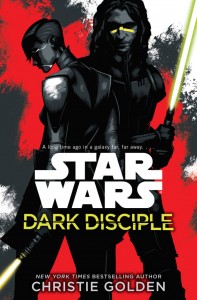 But the impacts have not been limited to that area. Despite the longstanding objections of female fans to Legends stories fridging female characters to serve the story arcs of male characters, three of the first five novels in the new canon – Lords of the Sith, Heir to the Jedi, and Dark Disciple – repeated the same trope. Other decisions were similarly tone-deaf, such as Leia’s blonde lady friend from Alderaan in the Princess Leia mini-series – with seemingly no appreciation of the disrespect to longtime Legends fans of Winter. The Lucasfilm Story Group decision-makers who determined the contents worthy of inclusion in Ultimate Star Wars ensured entries for obscure items of technology seen in only momentary glimpses in the movies and marginal characters that appeared only in a single episode of The Clone Wars, yet they omitted Amidala’s handmaidens, who were frequently slighted by male fans but consistently have been highly popular among female fans and fanficcers ever since The Phantom Menace – most recently reaffirmed in the dedication to the #1 New York Times bestselling novel Ahsoka by E.K. Johnston. Keira Knightley’s Sabé, whose decoy role is crucial to The Phantom Menace, received an entry comparable to expository pilot Ric Olié and the command battle droid OOM-9. Even Dormé, a character with a substantial supporting role in Attack of the Clones and portrayed by another internationally famous actress, Rose Byrne, was not deemed notable enough to warrant her own entry in the definitive new canon encyclopedia.
But the impacts have not been limited to that area. Despite the longstanding objections of female fans to Legends stories fridging female characters to serve the story arcs of male characters, three of the first five novels in the new canon – Lords of the Sith, Heir to the Jedi, and Dark Disciple – repeated the same trope. Other decisions were similarly tone-deaf, such as Leia’s blonde lady friend from Alderaan in the Princess Leia mini-series – with seemingly no appreciation of the disrespect to longtime Legends fans of Winter. The Lucasfilm Story Group decision-makers who determined the contents worthy of inclusion in Ultimate Star Wars ensured entries for obscure items of technology seen in only momentary glimpses in the movies and marginal characters that appeared only in a single episode of The Clone Wars, yet they omitted Amidala’s handmaidens, who were frequently slighted by male fans but consistently have been highly popular among female fans and fanficcers ever since The Phantom Menace – most recently reaffirmed in the dedication to the #1 New York Times bestselling novel Ahsoka by E.K. Johnston. Keira Knightley’s Sabé, whose decoy role is crucial to The Phantom Menace, received an entry comparable to expository pilot Ric Olié and the command battle droid OOM-9. Even Dormé, a character with a substantial supporting role in Attack of the Clones and portrayed by another internationally famous actress, Rose Byrne, was not deemed notable enough to warrant her own entry in the definitive new canon encyclopedia.
 The disparity in the resurrections after the Legends reboot, then, is not a coincidence or a set of decisions which occurred in isolation. It is a direct product of who is – and who isn’t – part of the decision-making process in Lucasfilm’s new canon storytelling.
The disparity in the resurrections after the Legends reboot, then, is not a coincidence or a set of decisions which occurred in isolation. It is a direct product of who is – and who isn’t – part of the decision-making process in Lucasfilm’s new canon storytelling.
To put the point another way: the Legends resurrections include the TIE Defender but not Tycho Celchu. Undoubtedly fans of Legends gamer lore are represented. Who advocates for the interests of longtime fan-favorite Legends characters?
 The men creating the new canon have been empowered to include their fond Easter Eggs, from Malachor and Shantipole to Sienar and the ISB. Surely in all of the post-A New Hope tales already told in the new canon, a useful and effective place could have been found for a pilot motivated to join the Rebellion after Alderaan was destroyed by the Death Star while he was speaking on a live comm with his family there – if someone had cared enough to value that Easter Egg equally, too.
The men creating the new canon have been empowered to include their fond Easter Eggs, from Malachor and Shantipole to Sienar and the ISB. Surely in all of the post-A New Hope tales already told in the new canon, a useful and effective place could have been found for a pilot motivated to join the Rebellion after Alderaan was destroyed by the Death Star while he was speaking on a live comm with his family there – if someone had cared enough to value that Easter Egg equally, too.
It is important to emphasize, as well, that carrying forward Legends characters into the post-reboot canon is not qualitatively any different than reviving factual lore. Lucasfilm authorities repeatedly have clarified that the inclusion of a Legends planet or namedrop does not bring into the new canon anything other than what is specifically used. The planet Malachor V, for example, appeared in Star Wars Rebels – but that does not make anything else from the Knights of the Old Republic videogame canon, beyond what is seen in Rebels. The same principle applies to the resurrection of Legends characters. Thrawn in Star Wars Rebels is a Chiss grand admiral in the Imperial fleet, but that does not mean Heir to the Empire or Outbound Flight have become canon, too. Even more clearly, of course, the reboot also set aside the post-Return of the Jedi tales and offspring of Leia, Han, and Luke, with the new canon built around stories such as The Force Awakens and Bloodline.
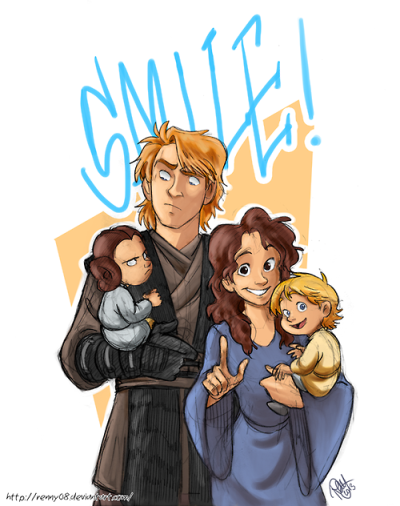
Ironically, alternate universes long have been extremely popular in the female-centric fanfiction community, yet their favorite Legends characters remain on the shelf – while the primarily male fans obsessed with continuity errors and retcons have been rewarded with their favorite factual lore from Legends being revived in modified and changed forms in the new canon. With portrayals ranging from canon-compliant or slightly divergent due to a twist in fate to significantly shifted characterization in a broadly different alternate universe, participants in the fanfic community are at ease with multiple versions of the same character. So too are fans who come to Star Wars from the fandom of superhero comics and movies, where each new creative team brings a slightly different spin to the portrayal of a familiar character. The vast majority of Star Wars fans would have no trouble understanding, and intellectually reconciling, the two variations of a character presented by an original Legends incarnation and a resurrection in the post-reboot canon. If Thrawn can cross over as a major player, so too can Mara Jade – and certainly numerous fan favorites could appear as Easter Eggs or namedrops, no different than the already-numerous winking references to factual lore.
Most of the individuals in a position to advocate for Legends resurrections have been men, and nearly all of the elements of Legends brought forward into the new canon have suited the fanservice preferences of those fanboy sensibilities. While the high-level oversight from the Story Group can make some contribution, Kathleen Kennedy has acknowledged that the input and feedback from executives and story team to the individual creators tends to create change “in small increments” with cumulative effect. The scope of the Legends resurrections, and the appeal and content of the stories as a whole, will reflect a broader and more representative set of interests from fandom as a whole only when the voices in the room – the people with access and participation to advocate for their perspectives – become more inclusive.
For years, both fandom and Lucasfilm have privileged a subset of fans at the expense of others. If the talking point that “Star Wars is for everyone” is to become reality, then the new storytelling canon must be created with input from individuals who reflect everyone that loves Star Wars.
Related Links
- Everything Star Wars Has Reintroduced From the Old Expanded Universe (io9, Feb. 2017)
- Deep Dive into WEG Lore: Rogue One Ultimate Visual Guide (HishGraphics.com, Jan. 2017)
- How a Pen and Paper RPG Brought ‘Star Wars’ Back From the Dead (Glixel, Dec. 2016)
- “The next Mon Calamari” and why the old Expanded Universe needed to be separate (Club Jade, May 2016)
- The Legendary Star Wars Expanded Universe Turns a New Page (StarWars.com, Apr. 2014)
- What Is The Holocron? (StarWars.com, July 2012)
- Why Fanfiction Shaming Is a Feminist Issue (Bustle, Jan. 2017)
FANgirl Blog Links
- Fangirl Speaks Up: Star Wars Books and Me – Caught in a Bad Romance (Feb. 2011)
- Fangirl Speaks Up: The Missing Demographic (Feb. 2011)
- Fangirl Speaks Up: Reenergizing the EU Novels (Mar. 2011)
- No Reboot Necessary: Learning to Love Your Franchise, Warts and All (May 2011)
- Luke Skywalker Must Die (May 2011)
- Can Luke Skywalker Avoid Character Apocalypse? Follow-up to Luke Skywalker Must Die (June 2011)
- Seeking Strong Female Heroine: Jaina Solo in The New Jedi Order (June 2011)
- Ben Skywalker’s Ascension into Domestic Violence – Why the Fate of the Jedi Hurts So Much (Aug. 2011)
- Seeking Strong Female Heroine: Mara Jade Skywalker in the Star Wars EU (Oct. 2011)
- Path Dependence in Star Wars Storytelling (Aug. 2014)
- Kiri Hart Talks Rebels and the Future of Star Wars Storytelling (Oct. 2014)
- Rey At Risk: Keeping Lucasfilm Accountable to Her Potential (Feb. 2016)
- Story Group Members Talk Creating Star Wars and Roles at Lucasfilm (Aug. 2016)









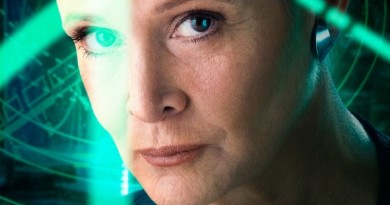
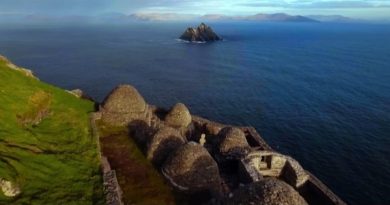
Pingback:Through Imperial Eyes: Thrawn’s Return Makes the Case for Mara Jade – FANgirl Blog
Pingback:The Ultimate Star Wars Marathon – Astral Conflicts
Pingback:LOS LÍMITES DEL TRANSMEDIA - Innovación Audiovisual